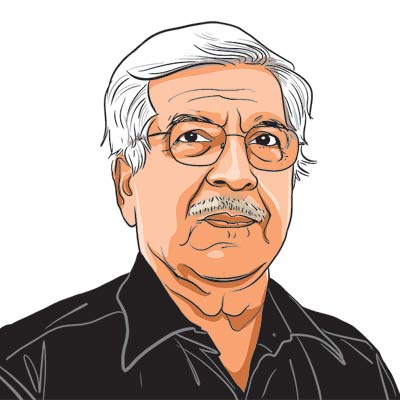Opinion Icons have many faces… one for each one of us!
The Foundations of Economic Analysis was a restatement of the unifying principles of Economics in a manner not known earlier,and swept many cobwebs away.
Truth about iconic characters gets a legendary quality. Writing an obit edit on Paul Samuelson,The Indian Express tells the story of his doctoral dissertation chair Joseph Schumpeter turning to a fellow examiner and asking,”Well,gentlemen? Did we pass?” The story is in the main absolutely correct. And yet,I heard another very largely similar version of it.
In the sixties,the American economist Arthur Smithies was visiting Jaipur where I was studying economics. His contribution to business cycle theory was well known and,on behalf of my teachers,I showed him around the pink city.
Five years later,my teacher at the University of Pennsylvania,Irving Kravis,asked me to attend a seminar that Gunnar Myrdal had organized in southern Sweden on development experiences. Changing planes at London for Malmo,I ran into Smithies again. Then too,Heathrow was not the best airport in the world to lounge in,and he asked me to give him company.
I had asked him for advice when going to the US to study,and he had said I should go to the University of Pennsylvania,for my interests were in development modelling,and Larry Klein was there. I asked him for curiosity why he did not suggest Harvard. He said he remembered the days we had spent together in Jaipur and my interest in problem-solving for a poor country,and that Harvard economics was largely theoretical.
He then told me the story of Samuelson’s doctoral exam,since he too was one of the examiners. The Foundations of Economic Analysis was a restatement of the unifying principles of Economics in a manner not known earlier,and swept many cobwebs away. Schumpeter started the exam by saying,”Paul,you are not defending anything,we are defending ourselves.” Legends,like Roshomen,have many facets.
A decade later,I was heading the Perspective Planning Division of the Planning Commission in one of my stints in Delhi. Our senior,K N Raj,was for personal reasons,spending a year with the UN. Raj being Raj,was not interested in just spending a year in a sinecure and started work on Ishikawas legacy of employment in rice cultivation in Japan. And of course,we were all working on Ishikawa before we could say paddy.
I remember Vaidyanathan wrote one of his usually careful pieces on employment in paddy cultivation in different parts of India,saying,as he usually does,that more work was necessary. Together with my teacher G S Bhalla,and Amit Bhaduri,I was working on the econometric testing of Ishikawa’s law on constant labour per unit of land on account of migration.
The paper was published and extensively quoted,although all three of us were never sure why. Amit kept saying he suspected it was a truism,and I would comfort him by pointing out the obvious — that truisms are better than falsisms.
Raj wanted to discuss employment prospects in paddy cultivation all over India in a series of meetings,for which he arranged UN money. It was left to me to put it all together,so I put on my walking shoes and went to meet a number of nibs. They all remembered Raj. They could be the Labour Secretary and the Finance Secretary,both ICS officers those days,a former Vice-Chancellor,a Director of a major economics think tank,and so on. It was fascinating that each one had his own story of the time Raj came to Delhi from Bombay,and worked with the Government and then joined the Delhi School of Economics. In each story the storyteller had a (large?) role to play. They were all around the same facts,and yet so different.
Isn’t it nice that heroes belong to each one of us?





